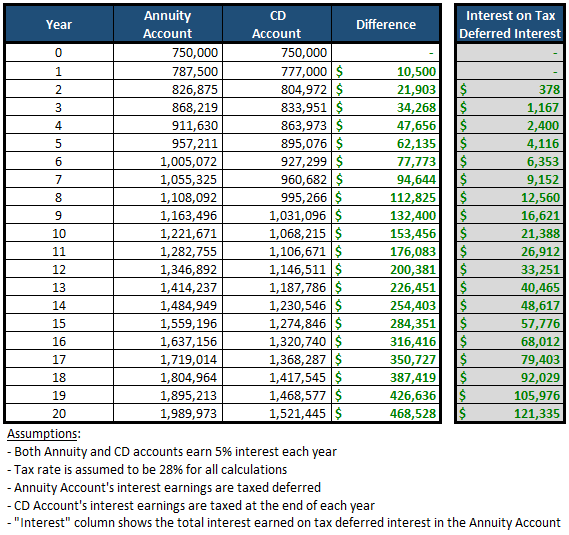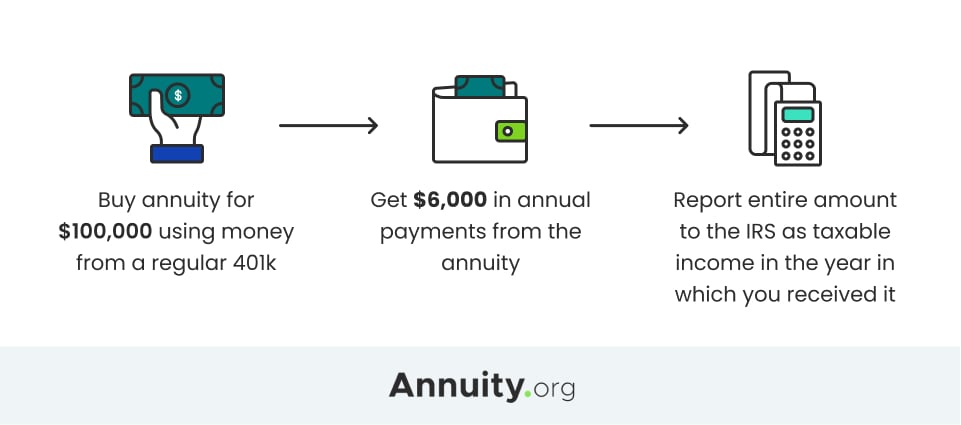All Categories
Featured
Table of Contents
This five-year general regulation and two complying with exemptions use only when the proprietor's fatality causes the payment. Annuitant-driven payments are talked about listed below. The initial exception to the basic five-year rule for private beneficiaries is to approve the survivor benefit over a longer period, not to surpass the anticipated life time of the recipient.
If the recipient elects to take the survivor benefit in this method, the advantages are strained like any various other annuity repayments: partly as tax-free return of principal and partially gross income. The exclusion ratio is located by utilizing the departed contractholder's price basis and the expected payouts based upon the beneficiary's life span (of shorter period, if that is what the recipient chooses).
In this approach, sometimes called a "stretch annuity", the beneficiary takes a withdrawal yearly-- the called for quantity of each year's withdrawal is based on the same tables made use of to compute the called for distributions from an IRA. There are two advantages to this approach. One, the account is not annuitized so the recipient maintains control over the money value in the contract.
The 2nd exception to the five-year policy is available just to an enduring spouse. If the marked recipient is the contractholder's partner, the spouse may choose to "enter the shoes" of the decedent. Effectively, the partner is treated as if he or she were the owner of the annuity from its inception.
Tax rules for inherited Guaranteed Annuities
Please note this applies just if the spouse is called as a "assigned recipient"; it is not readily available, for example, if a depend on is the beneficiary and the partner is the trustee. The general five-year policy and the two exemptions just put on owner-driven annuities, not annuitant-driven contracts. Annuitant-driven contracts will certainly pay survivor benefit when the annuitant dies.

For purposes of this discussion, assume that the annuitant and the owner are various - Tax-deferred annuities. If the contract is annuitant-driven and the annuitant dies, the death activates the survivor benefit and the beneficiary has 60 days to make a decision just how to take the survivor benefit subject to the regards to the annuity agreement
Likewise note that the choice of a partner to "step right into the shoes" of the owner will not be offered-- that exemption uses just when the owner has died but the proprietor really did not pass away in the circumstances, the annuitant did. If the recipient is under age 59, the "death" exception to avoid the 10% charge will not use to a premature distribution once again, since that is readily available just on the death of the contractholder (not the fatality of the annuitant).
In truth, several annuity business have interior underwriting policies that reject to release contracts that name a different owner and annuitant. (There might be weird circumstances in which an annuitant-driven agreement meets a clients unique requirements, however most of the time the tax drawbacks will surpass the benefits - Period certain annuities.) Jointly-owned annuities might present similar issues-- or a minimum of they may not offer the estate preparation feature that other jointly-held properties do
Because of this, the death advantages should be paid within five years of the first owner's fatality, or subject to the 2 exceptions (annuitization or spousal continuance). If an annuity is held jointly in between a couple it would appear that if one were to pass away, the other can simply continue possession under the spousal continuance exception.
Think that the husband and wife named their boy as beneficiary of their jointly-owned annuity. Upon the fatality of either owner, the company must pay the fatality advantages to the son, who is the beneficiary, not the surviving partner and this would probably beat the owner's objectives. Was wishing there might be a system like setting up a recipient IRA, but looks like they is not the case when the estate is arrangement as a beneficiary.

That does not determine the sort of account holding the acquired annuity. If the annuity was in an inherited individual retirement account annuity, you as executor must have the ability to designate the acquired IRA annuities out of the estate to acquired Individual retirement accounts for each estate recipient. This transfer is not a taxed event.
Any kind of distributions made from inherited IRAs after project are taxed to the beneficiary that received them at their average income tax obligation price for the year of distributions. But if the acquired annuities were not in an IRA at her death, after that there is no chance to do a direct rollover right into an inherited IRA for either the estate or the estate beneficiaries.
If that occurs, you can still pass the circulation via the estate to the individual estate recipients. The tax return for the estate (Type 1041) can consist of Kind K-1, passing the earnings from the estate to the estate recipients to be tired at their specific tax obligation prices instead of the much greater estate revenue tax obligation rates.
Do you pay taxes on inherited Structured Annuities

: We will develop a strategy that consists of the finest products and functions, such as enhanced fatality benefits, premium bonus offers, and permanent life insurance.: Receive a tailored method designed to optimize your estate's value and minimize tax liabilities.: Execute the selected technique and obtain recurring support.: We will certainly help you with establishing the annuities and life insurance policy plans, providing continuous support to make sure the strategy stays reliable.
Ought to the inheritance be concerned as an income associated to a decedent, after that taxes may use. Normally talking, no. With exemption to retirement accounts (such as a 401(k), 403(b), or individual retirement account), life insurance policy profits, and savings bond rate of interest, the beneficiary usually will not have to birth any kind of earnings tax on their inherited riches.
The quantity one can acquire from a count on without paying tax obligations relies on various variables. The federal inheritance tax exception (Immediate annuities) in the USA is $13.61 million for individuals and $27.2 million for couples in 2024. Individual states may have their own estate tax obligation laws. It is suggested to consult with a tax expert for exact information on this matter.

His mission is to streamline retired life preparation and insurance coverage, ensuring that clients recognize their options and protect the ideal insurance coverage at unequalled rates. Shawn is the founder of The Annuity Professional, an independent on the internet insurance coverage company servicing consumers across the United States. Via this system, he and his team goal to remove the uncertainty in retirement preparation by helping individuals find the very best insurance coverage at one of the most competitive prices.
Table of Contents
Latest Posts
Highlighting the Key Features of Long-Term Investments Everything You Need to Know About Financial Strategies Breaking Down the Basics of What Is A Variable Annuity Vs A Fixed Annuity Benefits of Choo
Highlighting the Key Features of Long-Term Investments A Closer Look at How Retirement Planning Works Defining the Right Financial Strategy Benefits of Fixed Annuity Vs Equity-linked Variable Annuity
Highlighting Fixed Interest Annuity Vs Variable Investment Annuity A Comprehensive Guide to Variable Vs Fixed Annuities Breaking Down the Basics of Investment Plans Pros and Cons of Various Financial
More
Latest Posts